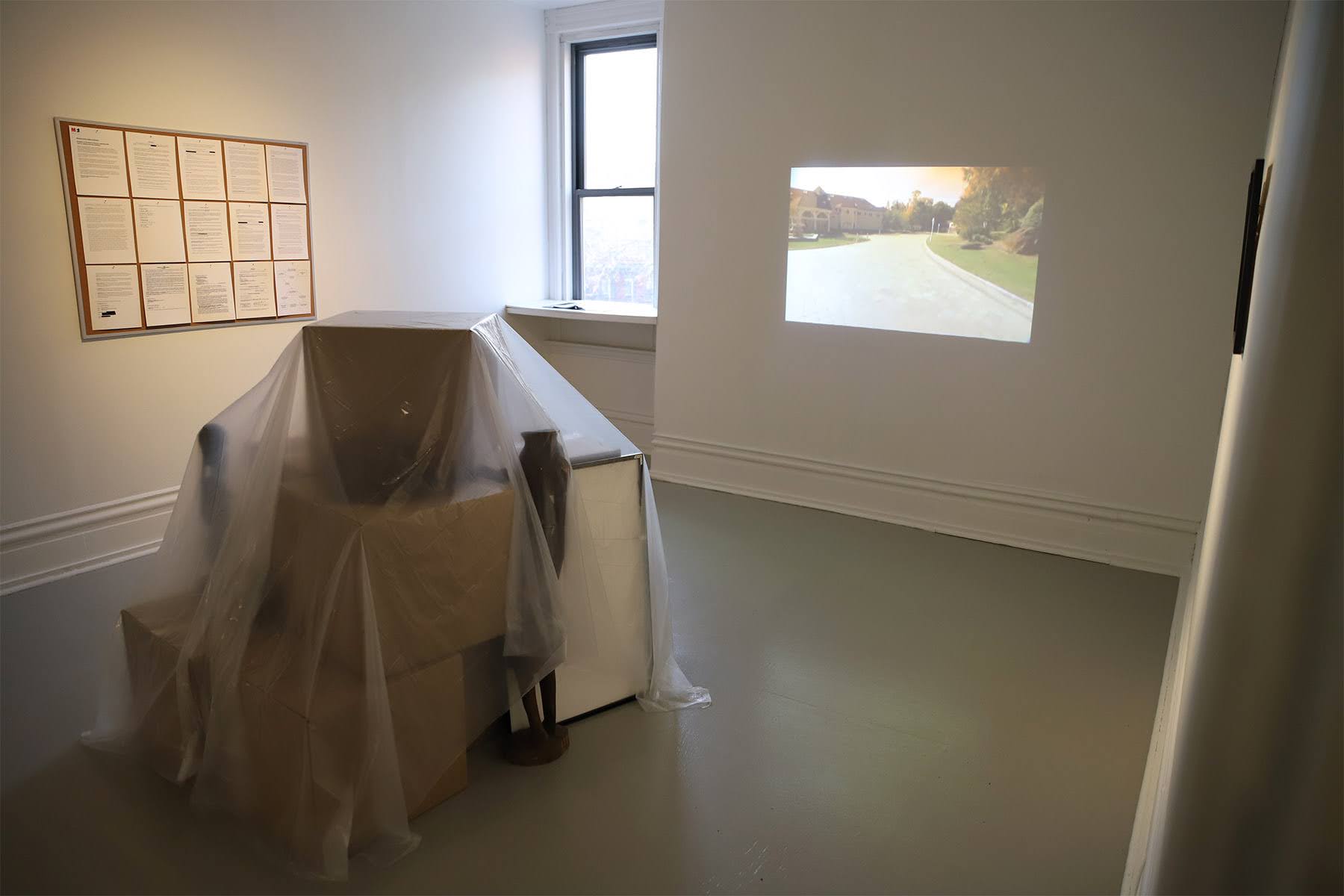Boxes full of items suggesting Black ownership, removed from a Highland Park house, are the centerpiece of an installation art exhibit by Harrison Kinnane Smith at the Mattress Factory in Central Northside. The house was appraised twice — once with a Black person presenting as the owner, and with the African American-themed items, and once with a White person and without the items. The difference was $36,000. (Photo by Ryan Loew/PublicSource)
The county bases tax bills largely on decade-old market conditions, and the system favors owners of higher-value properties, who tend to be White.
by Rich Lord, PublicSource
Can a stark room, dominated by a plastic-draped pile of boxes and decorated with inscrutable documents, spur scrutiny of the regressive tax that underwrites local government?
Artist Harrison Kinnane Smith spent much of the pandemic mulling property tax assessments, home appraisals and mortgages, and putting together one of the Mattress Factory’s temporary installations exploring the concept of home. Today, his work is at the center of a lunchtime panel discussion called “Overcharged and Undervalued: How Blackness Colors the Worth of a Home.”
A centerpiece of the discussion will be this data point: Based on assessments, sales and census tract demographics, the average Black homeowner in Pittsburgh pays property taxes at a 7% to 8% higher rate, relative to the market value of their home, than does the typical White homeowner.
“Say it’s a $100,000 assessment for the White family,” said Smith. “It would be $108,000 for the Black family.” The resulting difference in Allegheny County, City of Pittsburgh and Pittsburgh Public Schools property tax bills would be around $190 a year.
That finding echoes those of scholars who have found similar results nationally and in the vast majority of counties, including Allegheny.
Assessors nationally “systematically overvalue the lowest-priced homes, that is they estimate that those homes are worth more than they really are, whereas the homes at the top are systematically undervalued,” said Christopher Berry, a professor and director of the University of Chicago’s Center for Municipal Finance. Berry, whose research focuses on property taxes, is not involved in the Mattress Factory installation or discussion. The result is “a hugely regressive system.”
Politically, fixing assessments is perilous. Inevitably, some tax bills go up as others go down, and those who pay more complain — and vote.
 Artist Harrison Kinnane Smith, of Squirrel Hill. (Courtesy photo by Jared Piper)
Artist Harrison Kinnane Smith, of Squirrel Hill. (Courtesy photo by Jared Piper)
As a result of court cases and political decisions, Allegheny County’s assessments are based on 2012 market values, which can be adjusted when a property owner or taxing body appeals. Berry’s research found that as of 2017, Allegheny County’s assessments were regressive — more burdensome to those less able to pay — though they were still fairer than those of most counties in the state.

